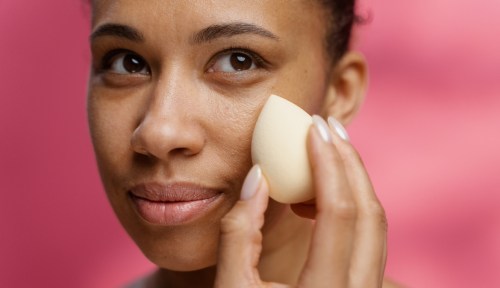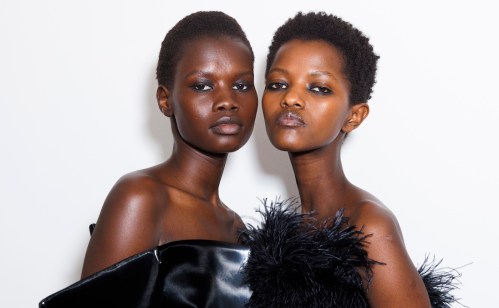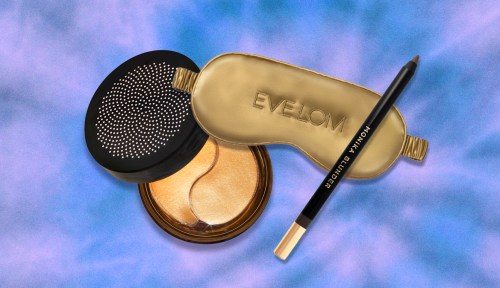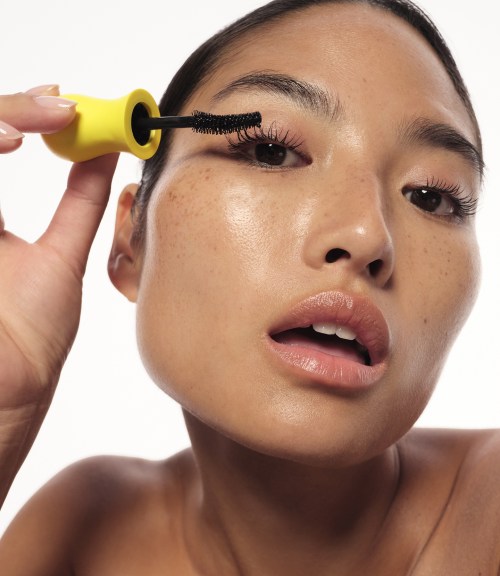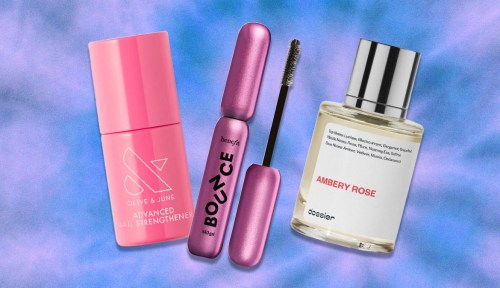The real reason I don’t wear makeup
With the "no-makeup" look becoming buzzier and more beauty brands starting to market inclusivity through their foundation shade ranges.
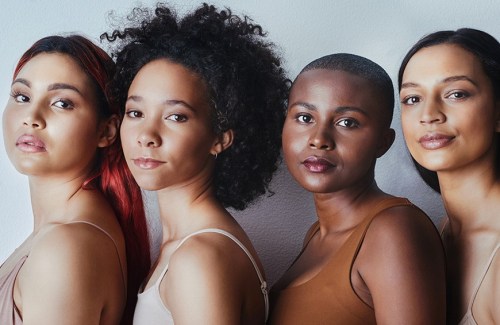
It’s no secret that one of the perks of working for a women’s lifestyle publication is having access to the “beauty closet.” This could be an actual closet, or a space the size of an entire New York City studio apartment, or just a bunch of shelves fully stocked with samples of the newest makeup and skin-care products that you’re able to try…for free.
The beauty closet is a lot of little girls’ and boys’ dreams, and I get it. I grew up in a family predominately of women, each of whom possesses her own form of Midwest glamour. One thing they all share, though, is an affinity for lipsticks, blushes, foundations, concealers, and eyeshadows. Let’s put it this way: I have more than one Mary Kay consultant in my family tree. Yet, I’ve never really worn makeup myself. And until recently, I believed it was for the reason most people are quick to offer: “You don’t need it.” A compliment? Sure. A cop-out? Most definitely. The real reason I don’t wear makeup is that, until now, it’s never existed in my skin tone.
You see, I’m mixed race—just like Tracee Ellis Ross, Rashida Jones, Nicole Richie, and so many other people. In fact, the number of Americans who identify as being two or more races grew by 32 percent in 2010, according to the U.S. Census Bureau. That’s a larger increase than those who identify as a single race, and in all likelihood that ratio will only continue to expand. Or, as Balanda Artis, the head of L’Oréal Paris’ Multicultural Lab, puts it: “A [new] skin tone is born every day. Personally, I love the fact that we’re getting to this point in the industry where we’re able to recognize the beauty in different shades.”
“A [new] skin tone is born every day.” —Balanda Artis, the head of L’Oréal’s Multicultural Lab
But there’s still a long way to go. Many brands have only relatively recently come around to the idea of throwing more shades into the mix. It started, as so many good things do, with Rihanna. Last September, with the introduction of Fenty Beauty, she ushered in a generation of 40 shades. Ahead of this, there were certainly brands with robust ranges, but sometimes the shade offerings were patchy and often they fell toward the ends of the spectrum (if that), leaving everyone in between without many options. This is especially true in clean beauty where small R&D budgets often allow for only limited hues; however, strides are being made. Annie Lawless, founder of Lawless Beauty, for instance, recently debuted a set of 20 well-plotted, representative foundations.
And even with double the shades, that’s not always the case: It can still feel like 50 shades of beige, a tell-tale sign that a brand has jumped on the buzz bandwagon without really thinking about the problem they’re trying to fix. When you create a collection that’s got a majority of options at one end of the skin-tone spectrum and a handful at the other, what about all the people in between?
For this reason, “foundations have become an area where beauty brands declare their principles,” says Linda Wells, founder of the new beauty brand Flesh and former editor-in-chief and founding editor of Allure magazine. And that means whatever the number, shades have to work for all and not just some.
“Foundations have become an area where beauty brands declare their principles,” —Linda Wells, former editor-in-chief of Allure magazine
It’s something that I’ve thought about a lot lately. I’ve loved watching makeup magic happen, since I was a kid, even from the sidelines. But part of me, I can admit, has always felt excluded from the fun. The “honey” hues I had growing up just didn’t cut it. So, in my own way, I’ve had skin in the game around recent developments. I mean this figuratively, but also literally. For example, recently, a brand sent over an extensive line of new foundations (in, you guessed it, 40 shades) and I found myself, for the first time, sitting on the floor of the beauty closet with my fellow editors swatching instead of watching.
Of the dozens of bottles, only a handful of colors weren’t some iteration of beige, and I immediately started to feel uncomfortable. While I was silently scanning, I saw one of my co-workers stick out her hand so that our beauty editor could yay or nay her selection. It blended in completely: She couldn’t see any difference between where her skin ended and the foundation began. I understood that this was the goal, and started looking for a shade that would give me a similar satisfaction…I didn’t find it.
That reality is why bottle counts can’t replace the heart of what Fenty brought when it launched, and the crux of why creating new shades is so important. “This can’t devolve into a numbers game or a kind of meaningless foundation inflation,” Wells adds. “The foundations have to deliver shades that really work on real skin. The temptation may be for brands to one-up each other with 43, 46, or 50 shades but the question then becomes: Are you helping the consumer or are you confusing her?”
I certainly felt lost that day while I was wiping foundation off my face that left me looking less and less like myself. And as I walked the bottle back to the beauty closet, I could feel an all-too-familiar sense of acceptance settling in. Acceptance that a hue for my skin tone, actually didn’t exist—but I refuse to believe this cannot change.
And fortunately for me, I have allies who refuse to believe this, either. One of them is my beauty editor, who after witnessing this all unfold took me on a field trip to Sephora to see how much actual progress has been made in terms of shade inclusivity. I was hesitant to pump any more foundations onto the back of my hand at first, but with encouragement, I found five-plus hues that work on my skin tone. I can’t relay how powerful of a feeling it was to dab makeup onto my skin and have it work for me. I might not wear it every day, but knowing those hues are out there gives me the ability to uncap the next-level confidence and self-assurance that I saw build up my mom, my sister, my friends, and, now, finally me. Makeup junkie in the making? You might say, it runs in the family.
Here’s a makeup artist’s advice for finding a foundation shade at the drugstore and here’s what’s up with sheer foundations.
Sign Up for Our Daily Newsletter
Get all the latest in wellness, trends, food, fitness, beauty, and more delivered right to your inbox.
Got it, you've been added to our email list.
